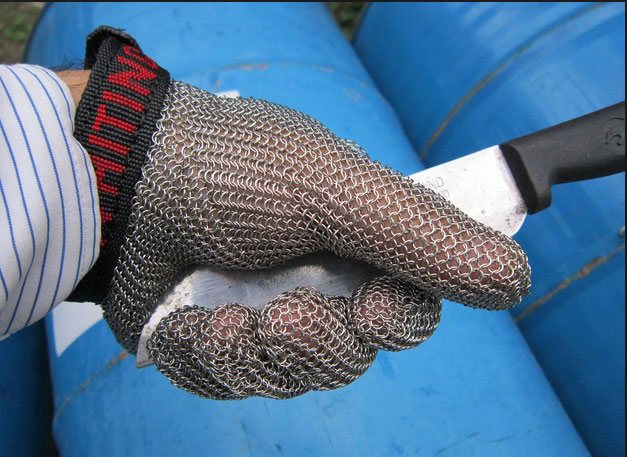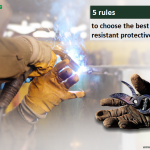Cut-resistant gloves are classified into many categories. Depending on the cut resistant level, customers will have the right options for the best hand-protection when working.
Cut-resistant gloves are necessary protective equipment for anyone who holds sharp objects by hands. They are likely "shields" to protect our hands from the danger of cutting, scratching, and puncture. However, the market of cut-resistant gloves is quite diverse that the cut-resistant level will correspond with the suitable jobs. Therefore, to protect your hands well in working, you need to know which type is suitable because if you choose the wrong one, the risk of being cut is extremely high.
5 SUBJECTS HAVE TO USE CUT-RESISTANT GLOVES

If housewives are the main subjects to use household gloves, then, cut-resistant gloves will also have certain subjects. Let's take a look at them.
Construction workers
Frequently contacting with iron, steel, and sharp construction materials, construction workers are the first to use cut-resistant gloves when working. Currently, most of them use fabric gloves or rubber gloves to work when holding sharp objects at normal levels. For more hazardous environments, they need to use specialized cut-resistant gloves.
Joiners
It is due to regular working with wood-cutting machines, saws, and planers, joiners need to be equipped with cut-resistant gloves.
Garment workers
Cut-resistant gloves will help protect workers' hands when working with sewing machines, cutting fabrics, and so on.
Mechanic
Regular working with machines and electrical equipment requires mechanics and heavy-industry workers to be equipped with safety equipment as gloves.
Food processing workers
For jobs such as poultry-slaughtering and seafood processing also need to be equipped with cut-resistant gloves, which are mostly rubber gloves at the normal cut-resistant level.
HOW MANY TYPES OF CUT-RESISTANT GLOVES? WHICH IS THE BEST ONE?
As usual, this issue will be selected by contractors, factories and manufacturers. However, not anyone is in this case, and even among them, being equipped with the knowledge of protective gloves or knowing which ones are suitable for working is extremely necessary.
Currently, there are two main lines of cut-resistant gloves, which are fiber and wire mesh. In addition to the criteria for flexibility, cut-resistant gloves are usually manufactured following four criteria:
- Anti-corrosion
- Anti-cutting
- Anti-tear
- Anti-puncture
For each criterion, they will be divided into 5 levels from 1 to 5 (the higher the level, the better protection)
Cut-resistant gloves made of fiber

The fiber here is usually HDPE, Hiflex or Kevlar. At the same time, the gloves will be covered with Nitrile PU in the palm to increase friction, making it easier to handle. This type is often used in heavy industry such as manufacturing, machinery maintenance, automobiles and electronic components or jobs relating to contacting with sharp glass plates, stones and metal edges.
However, this line of gloves is not suitable for food processing because of the powder. So in this field, people almost use rubber gloves.
Cut-resistant gloves made of wire mesh
This type of glove is highly resistant to corrosion, stainless, high durability and anti-tear that could minimize the damage of sharp objects. It is unnecessary to use powder to increase grip, so they are suitable for food and wood processing, garment and security industries.
Thus, it can be seen that each type of cut-resistant gloves will correspond to different jobs in order to bring the highest efficiency. Therefore, when choosing, consumers need to figure out carefully to choose suitable products as well as avoid causing unfortunate consequences in working.
>>> See more: 7 reasons to use rubber gloves for cooking and washing dishes
Please contact us:
Address: 103 Tran Van Kieu Str, Ward 10, District 6, Ho Chi Minh City.
Email: namlongco.gloves@gmail.com
Tel: (+84)28.3755.4772 – (+84)983.101.434









